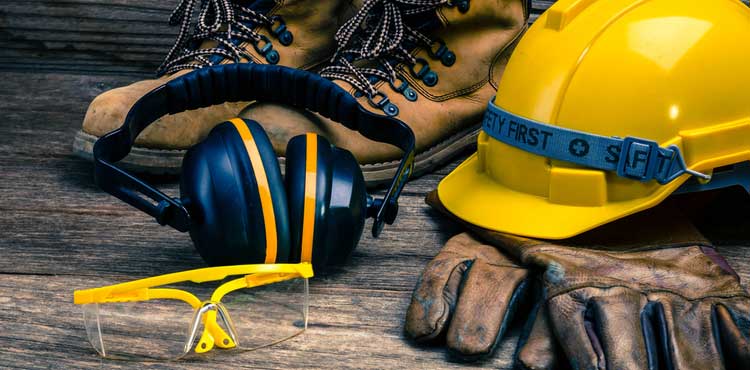8 workplace safety tips for employers
These tips can help you create a safer working environment:
Train employees on appropriate safety protocols
Your employees should be trained to safely perform the duties listed in their job description, including proper lifting techniques and how to handle any hazardous materials present in the workplace. All new employees should receive appropriate training before starting work, and it is important to provide refresher training from time to time.
Have emergency procedures in place
Develop a written safety plan that clearly outlines a procedure for handling and reporting injuries and emergencies, including the telephone numbers of first responders. Make sure all employees have read the plan as part of their training, and review it with them as part of your periodic refresher sessions. Also, make sure you post the plan in an accessible place, so it’s easy to refer to.
Outfit workers with the appropriate equipment to keep them safe
What your employees need in the way of personal protective equipment (PPE) depends on your industry. For example, antibacterial clothing keeps people safe with food processing, masks with double panels are used by healthcare workers, and industrial work clothing is fire resistant and robust. An industry association can often provide guidance for your particular workplace.
Suitable shoes required
Appropriate footwear is essential in any workplace. If your employees will be outside, footwear should be suitable for the weather. Non-slip soles are important in almost every environment. Encourage staff to wear closed shoes at work, and provide sturdy shoes in workplaces where there is a risk of foot injuries.
Post signs and labels where there are hazards
Some hazards are temporary, such as leaks that cause a floor to be slippery. Other hazards are more permanent, such as stored chemicals or sharps. Make sure you label permanent hazards correctly, and have signs ready for temporary hazards that could affect your business. The Occupational Safety and Health Administration (OSHA) has regulations for what conditions require signs and what the signs need to say.
Maintenance of tools and equipment
Did you know that more injuries in a restaurant happen with dull knives than sharp ones? That’s because a dull knife requires more pressure to cut through food, and that increases the likelihood of not only accidental cuts, but also repetitive motion injuries like tendonitis and carpal tunnel syndrome. Any equipment used by your employees should be checked regularly to make sure there are no broken or worn parts, no mechanical faults, and that everything is working as intended. Carry out routine maintenance on your equipment so it can last longer and your workers stay safe.
Maintain a clean workplace
Apart from the psychological benefits of less clutter in the workplace, it is also essential for physical safety. Hallways, walkways and exits should be free of clutter and debris to avoid tripping hazards. Also be on the lookout for tangled cords, disorganized equipment, and unsafely stacked boxes.
Consider ergonomic furniture and equipment
People who do office work also need to think about workplace safety. They may be less likely to be injured from a one-time accident, but they are at risk of back and neck pain, carpal tunnel, headaches, and vision problems. It is important that employees are taught correct posture when sitting at a desk. Computers and office devices should be adjusted to the correct height and distance so that your employees work safely.
By following these workplace safety tips, and others specific to your industry or environment, you can enjoy increased employee retention, increased productivity, and reduced workers’ compensation costs. Look around your workplace today and see where you can make some positive changes.
How workers compensation protects your business
Even when you maintain a safe workplace, some injuries are inevitable. If an employee is injured or becomes ill, workers’ compensation insurance protects both the employee and the business. It provides coverage for medical expenses and lost wages to the employee, and limits the ongoing liability of business owners.
Workers’ comp is required by law in most states, but the rules for coverage vary depending on where you do business.

